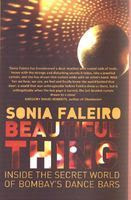Title: Operation Lipstick
Author: Pia Heikkila
Publisher: Random House India
Pages: 287
Price: Rs 250
Genre: Fiction
Rating: 6/10
Format: Paperback
I am
beginning to conclude that most of the books are good in parts, like this one.
There I said it, I liked the book in parts; the second part, that is!
The
cover page is tantalizing but it gives the feel of a spy-thriller, which may
not be the right words to describe this book. And then the title - ‘Operation
Lipstick’- and the by-line ‘mission for Mr Right’ seem more suitable for a chick
lit.
In this interview, the author says
that ‘she wanted to marry different genres – war writing, chick-lit and
adventure’. It may be what some people would like about this book (I gather it
has also made to the bestselling titles list for the month) but for me that was
the key problem because where the first part was clearly chick-lit, the second
part was majorly war journalism.
The
protagonist, Anna Sanderson, is a 32 year old war journalist based in Kabul,
working for London-based GNN, and in her own words “single and horny beyond
belief”. She stays with Tim, her cameraman, who is in his late thirties; and
Kim, an Australian print journalist, touching 30. The book begins like a
classic chick lit, and for first several pages we follow the protagonist in her
never-ending smoke and booze sessions, fantasies or confessions about men she
would like to have sex with or have had, and meeting a man of her dreams Mr Delectable,
Mark, at unlikeliest of places. Kelly finds out that her boyfriend Rich had
been cheating on her, and she decides that this time she would not forgive him,
and plans revenge. Anna, Kelly and Tim team up to pursue a big story that
involves Rich in arms smuggling. The mission is christened ‘Operation Lipstick’.
The mission eventually turns out to be life-threatening for all of them and clearly,
much serious than they had imagined.
Anna
also explores the barely there possibility of finding true love in war-torn
Afghanistan where there are not enough opportunities to meet the right men. But
she meets Mark and keeps bumping into him at unexpected places. She finds
herself deeply drawn to him and eventually all works out well at the end.
As I
mentioned, the first part of the book has a lot on sex which sometimes can make
you cringe. Sample these:
“Nothing wrong with a bit of
American beefcake after a main course. I was now imagining myself sucking his,
what I hoped would be, huge cock.”
“But it seemed clear that I was
arousing something else as there was a huge bulge in his jeans.”
But
the crown should go to this piece which starts with “I decided to take a walk to think things through”. The next two
pages dwell on Anna fantasizing about having sex with two twenty-somethings
army men in detail and ends with Anna masturbating.
However,
the book has several funny moments too.
“I fiddled with it, and it
turned out that the camera was still working. Bloody mobile phones, no good for
saving my life, but hey, don’t worry, it can still take scenic pictures en
route! The voice recorder was also in good condition – good to record my will,
I guess.”
“Stay calm. You have been in
worse shit than this. Actually you haven’t. But keep telling yourself that.”
“He held the rope, while I lowered myself
down. The movies never show you how it happens in real life. My getaway wasn't really elegant or Catwoman like. I looked more like a sack of potatoes wobbling
on some string.”
There
are no detailed characterizations barring Anna’s. We get to know neither Mark
nor Kelly or Tim.
Few
other things which I would like to highlight:
- The background or the setting was promising and I loved the part that deals in Anna’s experiences as a war-journalist and her adventures. That part was quite a page-turner.
- I thought Operation Lipstick did not have a proper closure at the end. In fact, I thought it was preposterous to embark on such a dangerous mission to teach a cheating boyfriend lesson.
- The romantic angle between Anna and Mark needed more fleshing out. Mark – her Mr Delectable – kept popping up at every place Anna goes and eventually both proclaim love for each other. Anna, a self-confessed sex-maniac, was in love with this man was hard to digest when all she did was either fantasize about him or his good looks.
- The angle on Tim was unnecessary.
- Anna Sanderson’s adventures as a war journalist have potential of developing into series (except for the overdose of sex). The author can still marry the chick lit and war-reporting genres.
All
said and done, I think, the author shines in the part where the story dwells
into the challenges of war-journalism, adventure and the situation in
Afghanistan. I would have loved the book much better if the book stuck to a
charming yet gutsy heroine and her adventure in war-reporting.
Note:
There are a lot of typo errors too. When you love a book, you overlook a few
mistakes here and there, but when you have mixed feelings, such mistakes just become
eyesores. Don’t they?














.jpg)


